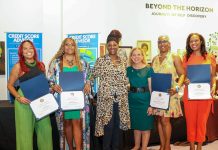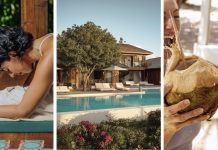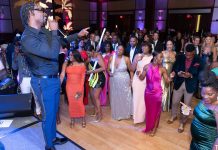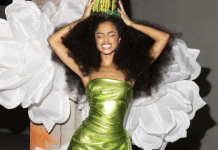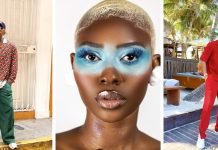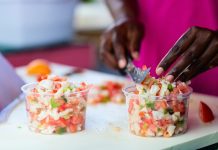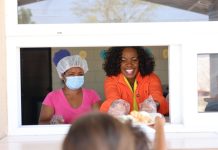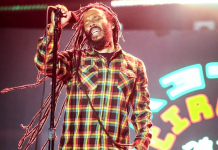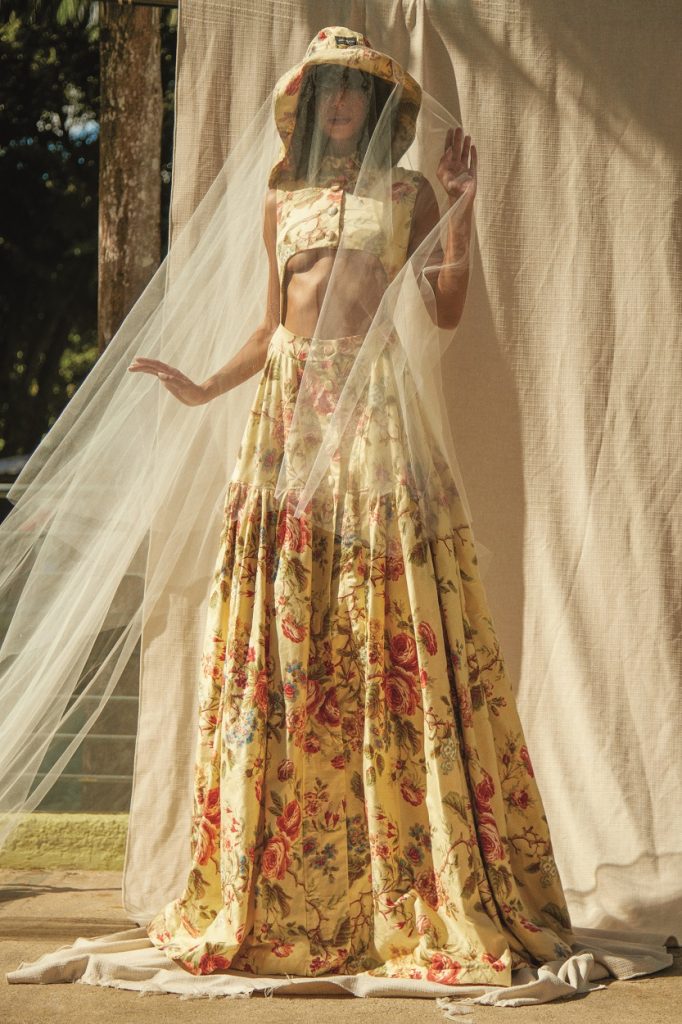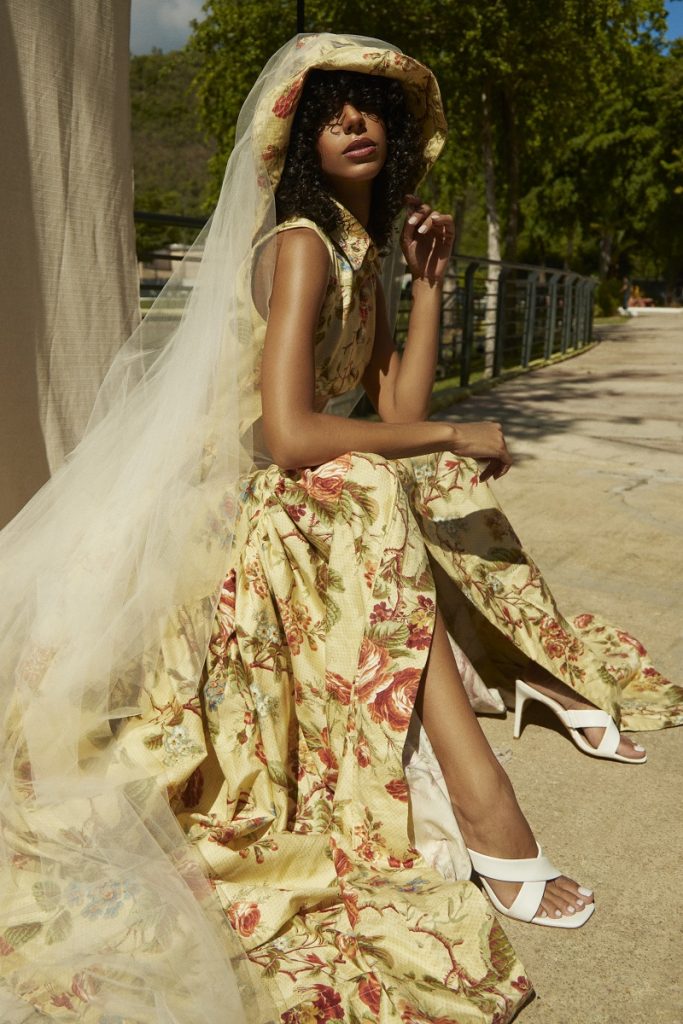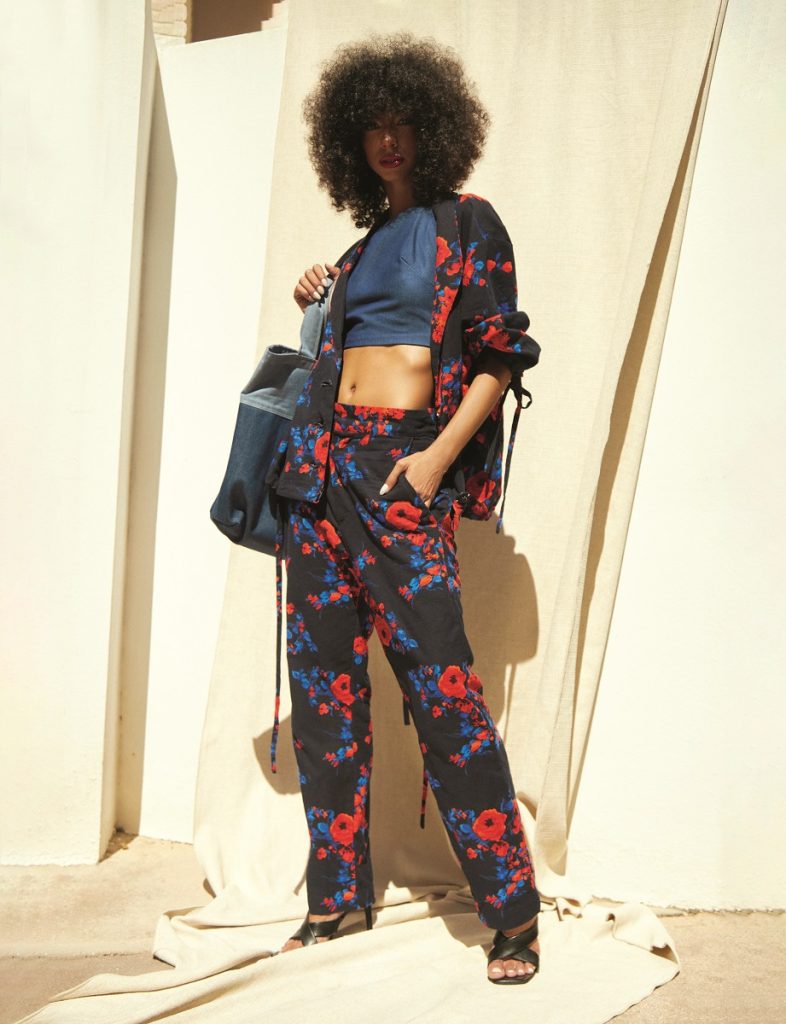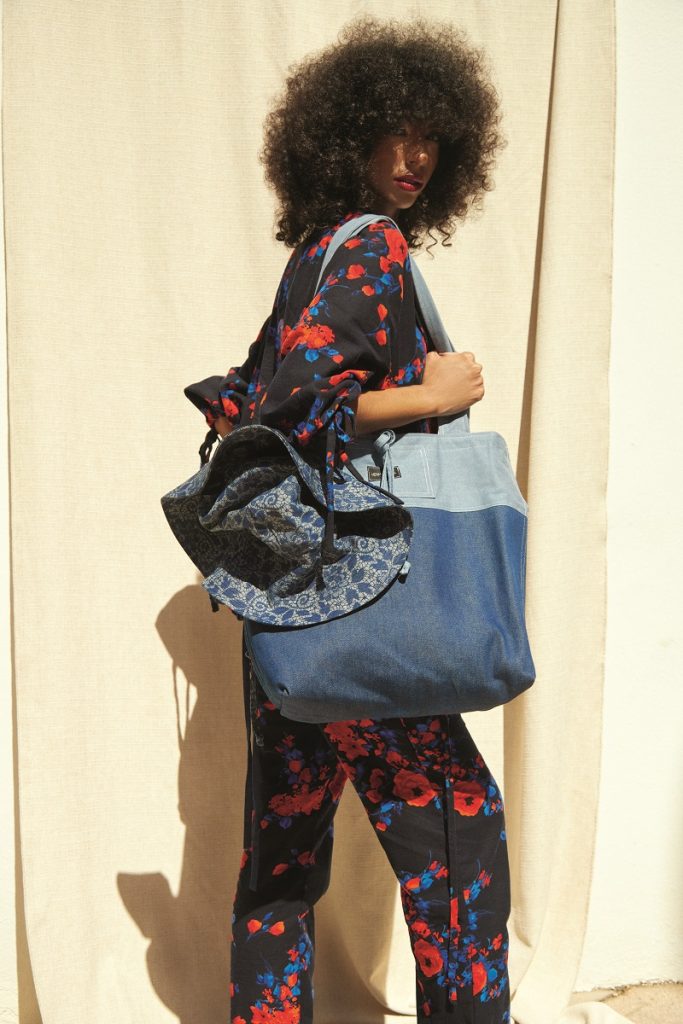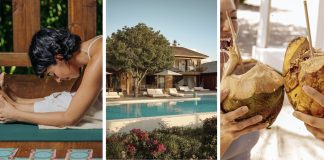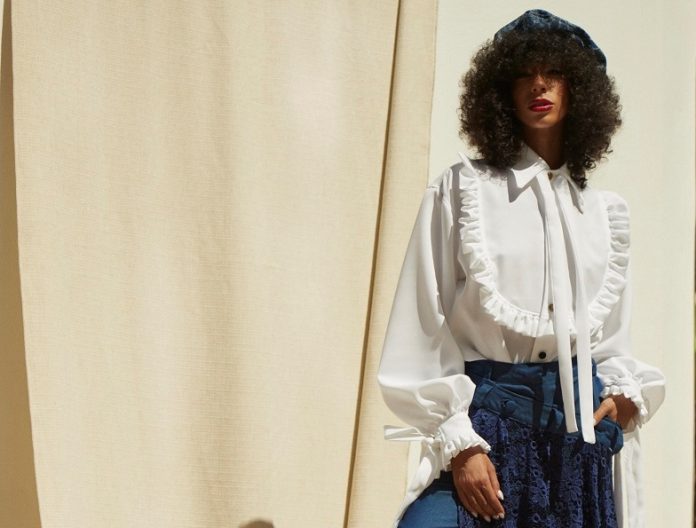
“We always wanted to embrace our culture in the best way possible. Everything that involves being Puerto Rican is my inspiration,” starts Herman Nadal, founder and lead fashion designer of his self-named brand. The brand’s looks take inspiration from traditional Puerto Rican culture, representing the iconic bomba dancer and jíbaro farmer ― both figures so emblematic of “the story of Puerto Rico,” explains Nadal.
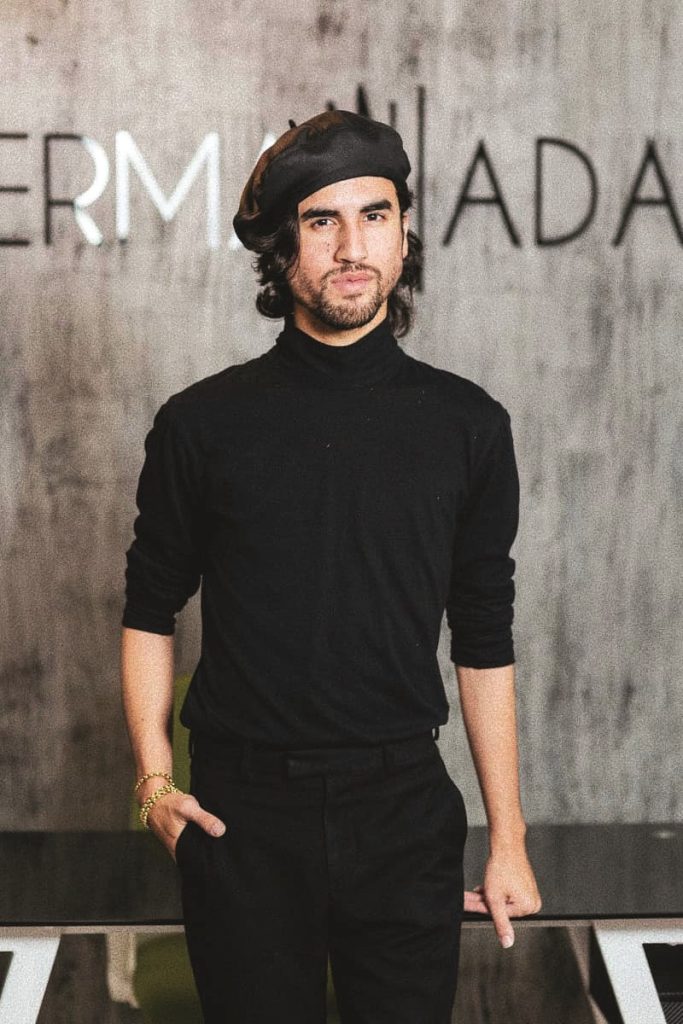
His passion to represent Puerto Rico is evident throughout his designs, filled with stripes, florals, flowy ruffles and crochet details that blend modern sensibilities with traditional folk styles.
Nadal’s appreciation and respect for fashion grew from a young age, watching his grandmothers working as seamstresses. After receiving his degree in both fashion and graphic design, he took a chance and started his brand at only 20 years old. Not only does Nadal create artful pieces that keep his beloved Puerto Rican culture alive, but he’s doing so with sustainability at the forefront.
At first, his small batch designs were born out of necessity due to the nascent brand’s limited resources. But this approach quickly became Nadal’s ethical cornerstone, becoming a pillar of his label. Now his custom creations use each and every millimeter of fabric to avoid waste and some of the most elaborate designs actually incorporate normally discarded scraps.
For Nadal’s newest Spring 2022 lookbook, patterned mini skirts, flower prints, flowy dresses and delicate lace take over. Inspired by the current happenings in his personal life with love, family and friendship, Nadal chose romantic colors and florals, giving everything a bit of an edge with 1970s inspired cuts.
- Photography: Israel Mojica
- Makeup: Zoe Glam
- Model: Valerie Hernández
- Location: Museo de Arte de Bayamón, Puerto Rico
A Garden Without Thorns
This silky silhouette is Nadal’s take on a modern wedding dress, subtly mixing both masculine and feminine cuts that reflect his signature blurring of gendered fashion boundaries. Here, the flowy A-line skirt echoes the billowy romance of ruffled skirts worn by female bomba dancers, while the high-collared button-down top nods to menswear tailoring. The delicate rose print with muted yellow background also pays nostalgic homage to the designer’s upbringing, inspired by a pattern on one of his grandmother’s sofas.
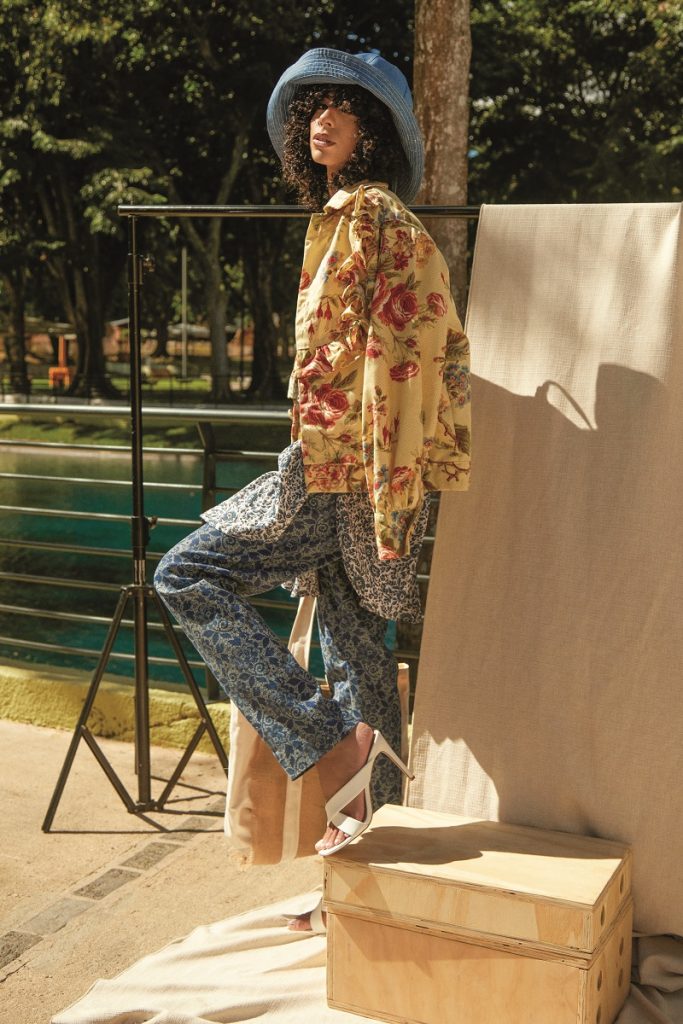
Utilizing the same floral fabric, Nadal also created an oversized trucker style jacket that presents a “twist on the typical denim vibe,” says Nadal. While the silhouettes feel more masculine, the ornate ruffled details allude to la blusa y falda, the traditional two-piece bomba costume. Pairing this jacket with other blue-patterned pieces isn’t typical, but for Nadal, mixing colors and patterns was a deliberate choice “to show how versatile the pieces can actually be.”
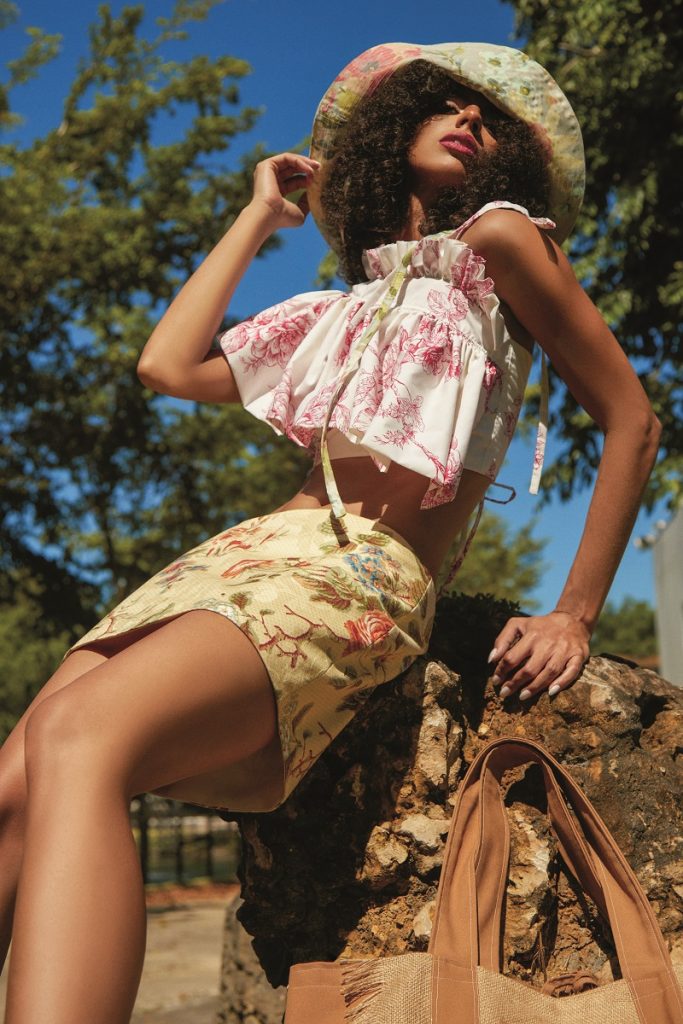
Nadal polished off his rose fabric by creating an additional skirt and bucket hat from the scrap material. “I started buying the full roll of the print, so I have the idea of a skirt,” he explains. “But many other pieces can come from what’s left to work with.” The botanical print is underscored with a dainty ruffled crop top in a pink floral pattern.
Discarded Denim
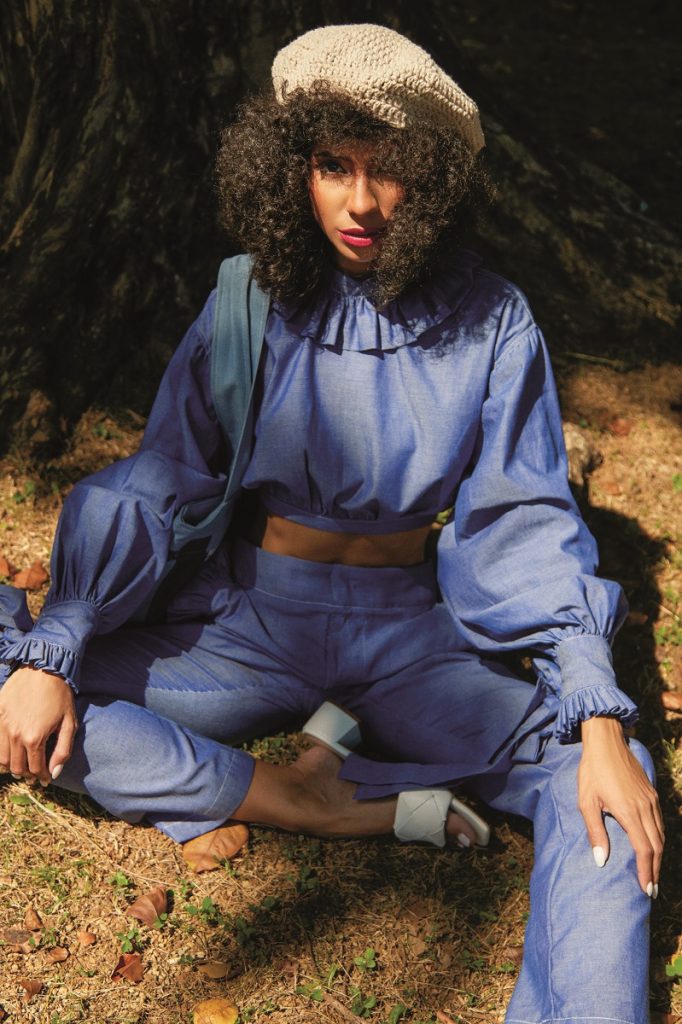
Inspired by the countryside workers known throughout Puerto Rico as the jíbaro, Nadal created a more feminine take on the figure’s iconic denim-on-denim uniform. The balloon-sleeved top once again incorporates familiar bomba ruffle detailing. But Nadal keeps a simple structured shape in the pants to retain that practical jíbaro blue-collar style.
With excess material, Nadal styled a denim cropped top with a floral blazer set, symbolizing the contemporary phenomenon of both white-collar and blue-collar Puerto Ricans connecting to their cultural past by identifying as jíbaros. The set also highlights both masculinity and femininity and presents a way to combine both in fashion. Nadal constantly seeks to break stereotypes on what the public sees as gendered clothing, often taking inspiration from Puerto Rican rapper, Bad Bunny. “He’s breaking the rules with genderless fashion,” he notes. “People like him make it more normal for other people to see it as something possible that they can wear.”


